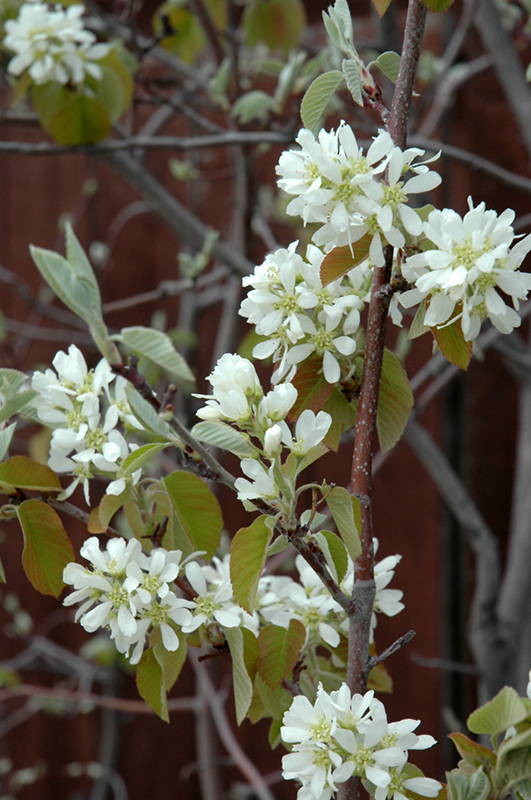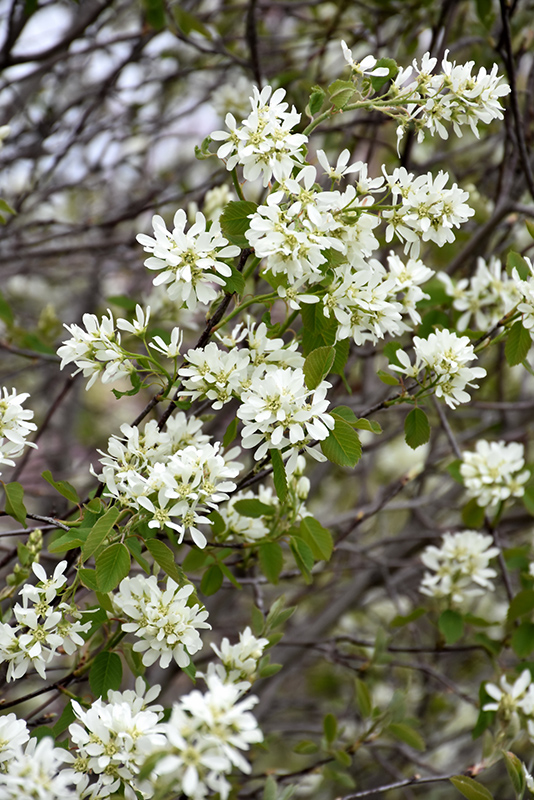Martin Saskatoon
Amelanchier alnifolia 'Martin'
Height: 15 feet
Spread: 10 feet
Sunlight:
![]()
![]()
Hardiness Zone: 2a
Other Names: Juneberry, Serviceberry
Description:
An extremely hardy selection featuring beautiful white flowers in early spring and a consistent yield of large, sweet berries in June; extremely versatile shrub for edible landscapes; does sucker with time to form highly productive thickets
Edible Qualities
Martin Saskatoon is a large shrub that is typically grown for its edible qualities, although it does have ornamental merits as well. It produces blue round berries with powder blue overtones which are usually ready for picking in early summer. The berries have a sweet taste.
The berries are most often used in the following ways:
- Fresh Eating
- Cooking
- Preserves
Features & Attributes
Martin Saskatoon is covered in stunning clusters of white flowers rising above the foliage from early to mid spring before the leaves. It has dark green deciduous foliage. The oval leaves turn an outstanding yellow in the fall. It features an abundance of magnificent blue berries with powder blue overtones in late spring.
This is a multi-stemmed deciduous shrub with an upright spreading habit of growth. Its relatively fine texture sets it apart from other landscape plants with less refined foliage. This plant will require occasional maintenance and upkeep, and is best pruned in late winter once the threat of extreme cold has passed. It is a good choice for attracting birds to your yard, but is not particularly attractive to deer who tend to leave it alone in favor of tastier treats. Gardeners should be aware of the following characteristic(s) that may warrant special consideration;
- Suckering
Aside from its primary use as an edible, Martin Saskatoon is sutiable for the following landscape applications;
- Hedges/Screening
- General Garden Use
- Naturalizing And Woodland Gardens
- Orchard/Edible Landscaping
Planting & Growing
Martin Saskatoon will grow to be about 15 feet tall at maturity, with a spread of 10 feet. It tends to be a little leggy, with a typical clearance of 2 feet from the ground, and is suitable for planting under power lines. It grows at a medium rate, and under ideal conditions can be expected to live for approximately 25 years. This is a self-pollinating variety, so it doesn't require a second plant nearby to set fruit.
This shrub is quite ornamental as well as edible, and is as much at home in a landscape or flower garden as it is in a designated edibles garden. It does best in full sun to partial shade. It prefers to grow in average to moist conditions, and shouldn't be allowed to dry out. It is not particular as to soil type or pH. It is somewhat tolerant of urban pollution. This is a selection of a native North American species.

